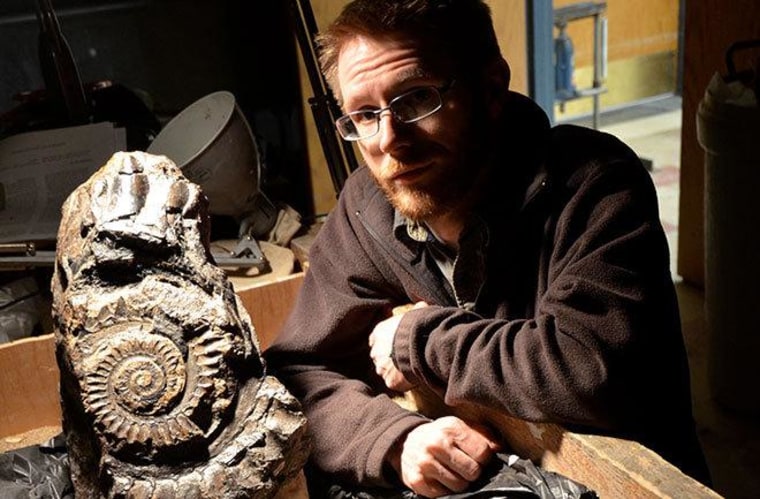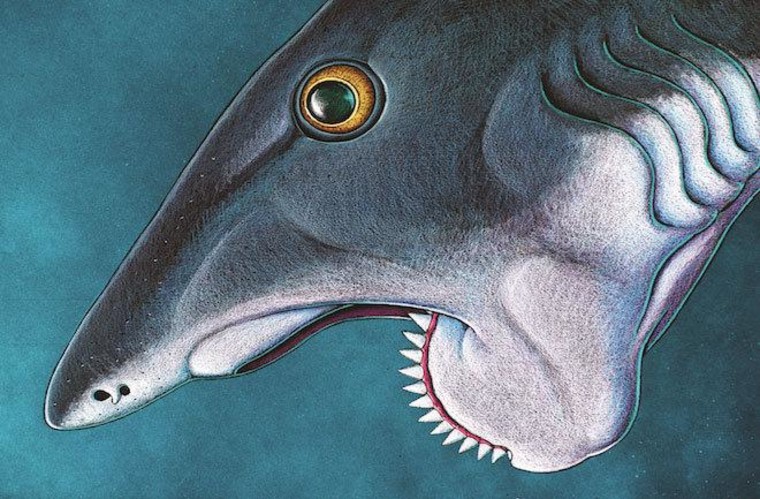By Jennifer Viegas
The world’s only animal, past or present, with a complete 360-degree spiral of teeth was Helicoprion, which sliced into prey like a buzzsaw.
This sharklike fish, which lived 270 million years ago, is described in the latest issue of Biology Letters. It had one of the most unusual mouths and sets of teeth in the animal kingdom.
"When the animal closed its mouth on prey, the spiral of sharp teeth rotated backwards, like a circular saw, and slashed through the meat,” lead author Leif Tapanila, an associate professor in the Department of Geosciences at Idaho State University, told Discovery News.
PHOTOS: Living Fossils, Animals From Another Time
Tapanila is also the research curator and head of the Earth Sciences Division at the Idaho Museum of Natural History. For the study, he and his colleagues took the first ever 3-D images of Helicoprion remains.
Scientists have puzzled over this animal for more than a century, given its highly unusual "tooth whorl.” The new research sheds light on what this prehistoric marine species looked like, what its ancestry was and how it behaved.
"Helicoprion looked a lot like a big-bodied modern shark, but it had a very unusual mouth,” Tapanila said. "An arc of 15 to 18 serrated teeth were exposed in the center of its lower jaw, and it had no protruding teeth in the upper jaw.”

The buzz saw-looking tooth whorl had two functions, the researchers determined. The outermost part anchored the teeth for biting, while the rest of the inner spiral was designed to house the old and previously used teeth from when the animal was younger.
The scientists did not see much wear, tear and breakage, so they suspect Helicoprion primarily sliced into squid or other ancient relatively soft and somewhat chewy sea life. Aside from squid and their early relatives, armored and cartilaginous fish lived in Helicoprion’s ecosystem, along with brachiopods, bivalves and snails. "Cartilaginous” refers to fish made up of cartilage, a firm yet flexible connective tissue.
While Helicoprion looked and acted like a shark, the researchers determined that it’s at the base of the family tree that today includes chimaera (aka "ghost sharks”) and ratfish. Ghost sharks are not technically sharks, but they look and act a lot like them.
Tapanila explained that cartilaginous fish are divided into two main categories: sharks and rays on one side, ratfish and chimaera on the other. They are all marine predators.
NEWS: Shark-Headed Human Ancestor Swam With Fishes
No living land or sea animal directly resembles Helicoprion -- especially it’s buzz-saw tooth whorl.
"It was really an improbable animal, and maybe one of the best examples of a successful ‘Hopeful Monster,’” Tapanila said, explaining that this refers to evolutionary processes that can result in very unusual body types, with most doomed to failure.
While Helicoprion eventually went extinct, it used to have a nearly global distribution and existed over a period of 10 million years or more, proving that even some eccentric body designs can be successful if they meet the particular needs influenced by the animal’s environment, food sources and more.
John Long, a professor of paleontology at Flinders University, told Discovery News that he fully supports the new findings about Helicoprion and its kin.
"This study ends a century old mystery about this iconic fossil (species) and highlights the unexpected diverse body form that holocephalans occupied,” Long said.
Tapanila and his team would love to find a fossilized prey animal in the mouth of such a prehistoric shark-like animal, to better determine which exact species they were hunting and eating. Given that they lived even before the dinosaurs, Tapanila isn’t "holding his breath” for such a rare find.
